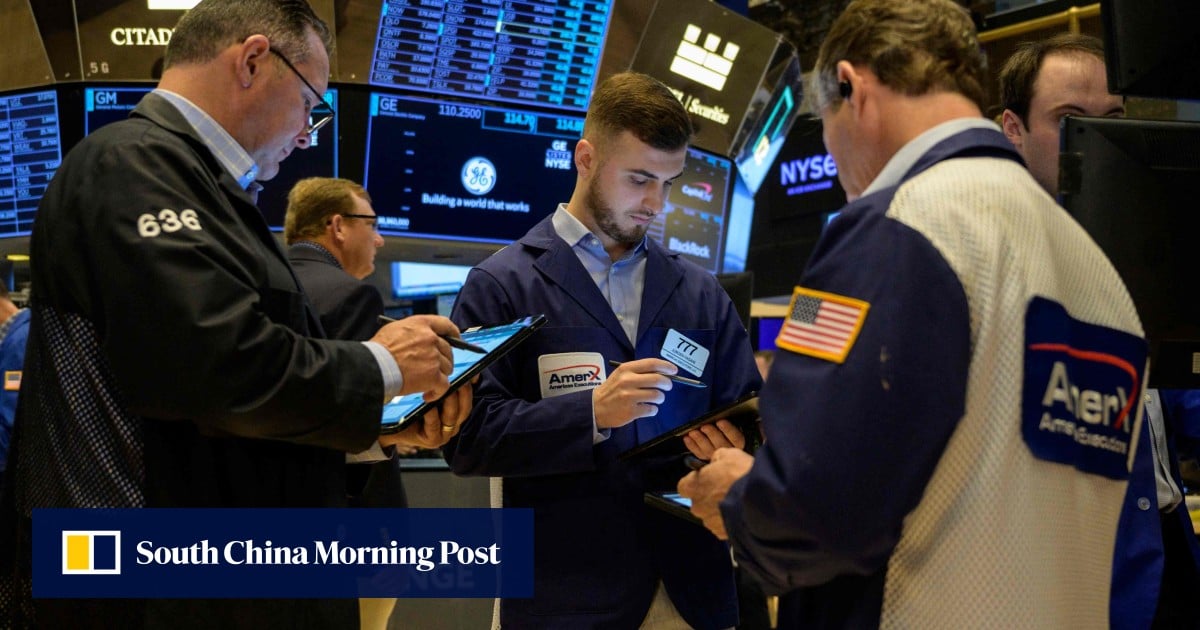
China has been holding onto the US dollar rather than dumping assets despite ongoing calls for de-risking, with the shrinking size of its US Treasuries due to the steep fall in their value, analysts said.
Even with Beijing and Washington sparring on multiple fronts from trade to technology, China is still the second-largest foreign investor in US Treasuries after Japan, remaining a “net buyer” of US dollar assets, according to a report by British research firm Capital Economics.
There have been calls from domestic scholars to de-risk from Washington’s financial hegemony, but the fact that the world’s second-largest economy cannot wean itself off the US dollar highlights China’s lack of viable alternatives, according to analysts.
“Beijing appears to be keeping about as much of its foreign portfolio in dollar assets and this underlines that it doesn’t have good options to diversify,” said Mark Williams, chief Asia economist at Capital Economics.
The total value of China’s holdings dropped in each of the four months to July, as domestic analysts voiced concerns for the safety of China’s investments amid geostrategic complexities.
But Williams’ study showed the reduction was primarily due to the sharp fall in the value of the US Treasuries China held.
“If the recent price moves [amid the bond sell-off] are sustained, the value of China’s Treasury holdings will fall regardless of whether Chinese entities sell any dollar assets,” he added.
China slashes US Treasury holdings again as rate-hike cycle’s end looms
China slashes US Treasury holdings again as rate-hike cycle’s end looms
Citing US Federal Reserve estimates based on US Department of the Treasury data, the report also said China has remained a “net purchaser” of long-term securities since the start of 2021, if its increasing stakes in US agency bonds were included.
An agency bond is a security issued by a government-sponsored enterprise or by a federal government department other than the US Treasury.
A separate research paper by the Greenberg Centre for Geoeconomic Studies also put the share of US dollar bonds in China’s overall reserves at about 50 per cent despite de-dollarisation calls from prominent policy analysts and former officials.
Yu Yongding, a researcher with the Chinese Academy of Social Sciences and a former People’s Bank of China (PBOC) adviser, said at September’s Shanghai Bund Summit that China must continue to dump US Treasuries to mitigate the impact of US Federal Reserve interest rate increases and political risks and to “smoothen” trade relations with the US.
“Instead of accumulating dollars through our export machine and investing them back via low-return Treasuries, emphasis must be shifted,” he said, urging the safety of overseas assets to be elevated as an imperative informing all investment decision making.
Why a weak yuan is spurring a retail gold rush in China
Why a weak yuan is spurring a retail gold rush in China
There have already been signs of gradual diversification away from the US dollar assets, with China’s investment in gold reserves increasing for 11 consecutive months.
As of the end of September, among official reserve assets, gold had reached 70.46 million ounces, marking an increase of 840,000 ounces from the previous month.
But China still faces a reality check as it seeks to look beyond the US dollar to avoid Washington weaponising its financial primacy and the reach of its sanctions.
The world’s providers of safe and liquid assets are all Western economies, which acted together in placing sanctions on Russia, said Williams.
That’s a huge sum that can’t all be hidden or absorbed by the shallower markets of its friends
“That means there’s little ‘additional safety’ in shifting out of the dollar into the euro, for example,” he said.
“Another option is to channel investments into non-traditional markets. But China has US$5 trillion in assets spread across the PBOC, commercial banks and sovereign funds. That’s a huge sum that can’t all be hidden or absorbed by the shallower markets of its friends.”
A public administration professor in Beijing also said China had been “held hostage” by its US Treasury holdings, with mending ties with the West the best way to protect its offshore capital.
“Rhetoric about de-dollarisation is lacking in workable solutions … Even the most hawkish won’t suggest [converting Chinese reserves into] roubles, Iranian rial or Saudi riyal,” said the academic, who asked not to be named due to the sensitivity of the issue.
The academic added that China sticking to the US dollar could be seen as a goodwill gesture amid frayed ties, if Washington could interpret it that way.
As US keeps saying ‘de-risk’, Beijing blasts ‘zero-sum Cold War mindset’
As US keeps saying ‘de-risk’, Beijing blasts ‘zero-sum Cold War mindset’
Capital Economics’ Williams also warned there could still be some “hidden reserves”.
Studies found some Chinese holdings of US Treasuries were looked after via third-party custodial accounts and proxies outside the US and that not all of China’s reserve assets would appear on the PBOC’s balance sheet.
“China can appear indirectly in the US Treasury data, through the holdings of the major custodial centres,” said the Greenberg Centre for Geoeconomic Studies report.
China may even buy more US Treasuries, with Wang Xinjie, the investment strategy director with Standard Chartered Bank’s wealth-management services in China, saying US Treasury bills could look attractive again, in terms of short- to medium-term returns, in the aftermath of each US Federal Reserve interest rate increase.


